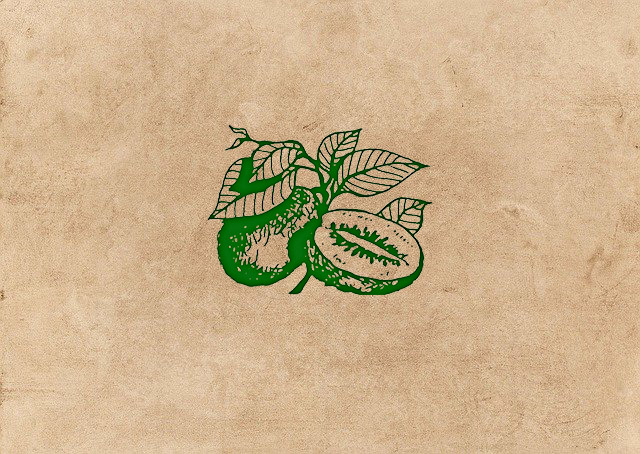Reduce Fruit Yield Reasons
Factors that reduce fruit yield
Have you ever had a healthy usually productive fruit tree fail to bear for no apparent reason? There are several factors that can cause a reduction in fruit yield and sometimes it is difficult to identify the specific cause, however there are measures to help achieve better results.
Insect damage, incorrect pruning, too much or too little water and high temperatures are just some of the factors that decrease the amount of carbohydrates stored in the tree. This results in a decrease in the number of flower buds. It can take just one unfavourable condition to occur during flower bud initiation to reduce flower and fruit production the following year.
Start with a vigorous tree
It is important to start out with a vigorous disease-free tree that has a strong and healthy root system. A distressed root-bound tree will never reach its full potential. When planting out, position trees in an open sunny spot without competition from the roots of surrounding trees. Most fruit trees require a fertile well drained soil.
To check for good drainage, the general rule is to dig a square hole to the depth of the pot, fill the hole with water and watch it drain away. If any water remains after half an hour the soil needs to be mounded.
Most grafted trees will commence bearing at about three years of age with production increasing as the tree matures. Seedlings are more variable with some species bearing as quickly as one year, whilst others can take several years.
Climate and Weather
Climatic influences are one of the most probable causes of reduced fruit yield. A warm mild season in some trees can accelerate vegetative growth at the expense of fruit formation.
In deciduous fruit trees the winter temperature may not have fallen low enough to meet the trees\' chill requirements. Deciduous trees such as nashi require a prolonged period of winter chill for maturation of flower buds.
Frost is another factor that can severely effect fruit set. The central parts of the flowers are very fragile and easily damaged by frost. The damage is not easily detected and can result in little or no yield.
Exceedingly high temperatures can also decrease flower development while cool temperatures can decrease the viability of pollen. Fruit formation in some species is dependent on humidity. Fruit set in the Custard Apple family is greatly reduced when the relative humidity falls below 70%. On the other hand excessively hgh humidity - over 95% is also detrimental. Hot dry winds during flowering can also cause flower loss or damage.
Plants have specific climatic requirements, so to achieve the best results it is important to plant species that are suited to your climate.
Water
Too much or too little water not only affects fruit yield but also has a debilitating effect on the plant. Excessive rainfall or over-watering will stimulate weak sappy growth at the expense of fruit. Shortage of water will also cause plants to stress, resulting in little if any formation of fruit or fruit and flower drop.
Pollination
Different families of plants have various means of pollination. The term \'self-fruitful\' or \'self-pollinating\' applies to trees that bear fruit from their own pollen. Those requiring pollen from another variety within the same genus are called \'cross-fruitful\' or cross-pollinating\'.
There are fruit trees that have male and female flowers on separate plants - the pawpaw is an example of this. Others may have both male and female flowers on the same plant but the male may shed its pollen before the female flower is fully receptive.
For best results pollinators need to be grown within 500m of the other variety and be blooming at the same time. When purchasing fruit trees ask whether a pollinator is necessary in order to produce fruit or to increase yield.
Methods of carrying pollen are bees, insects, water, wind or animals. Bees work in warm dry still weather. Prolonged rain, windy conditions or cool temperatures limit the number of working bees and reduce pollination.
Fertiliser
Heavy or too frequent fertilising (especially when using a fertiliser with a high nitrogen content) can cause over stimulation of vegetative growth. This can reduce the plants\' ability to produce flowers.
Two golden rules of fertilising:
Less is more, and never fertilise while the tree is flowering. Too little fertiliser, more so in deficient soils, can result in a stressed condition causing flower or fruit drop.
Pests and disease
Sap sucking insects such as aphids, scale and mites, plus the larger insects, caterpillars and grasshoppers all cause major damage to flowers and fruit.
Diseases can be particularly debilitating and in some cases will kill trees quickly. Prolonged wet weather can encourage diseases such as anthracnose, phytophthora, black spot, mildew and sooty mould, all of which adversely affect fruit set or maturation.
Pruning
Incorrect pruning can alter the natural habit of the tree or stimulate excessive growth. Both will delay fruit and flower production. Before pruning refer to a good gardening book or get advice from an experience person.
Chemicals and pesticides
The use of pesticides can kill bees therefore reducing pollination. Some pesticides can also be toxic to delicate flowers causing abortion and loss of fruit.
Healthy cared for trees have a high resistance against insect attack, disease and adverse weather conditions. They will provide higher yields of delicious home-grown fruit.













